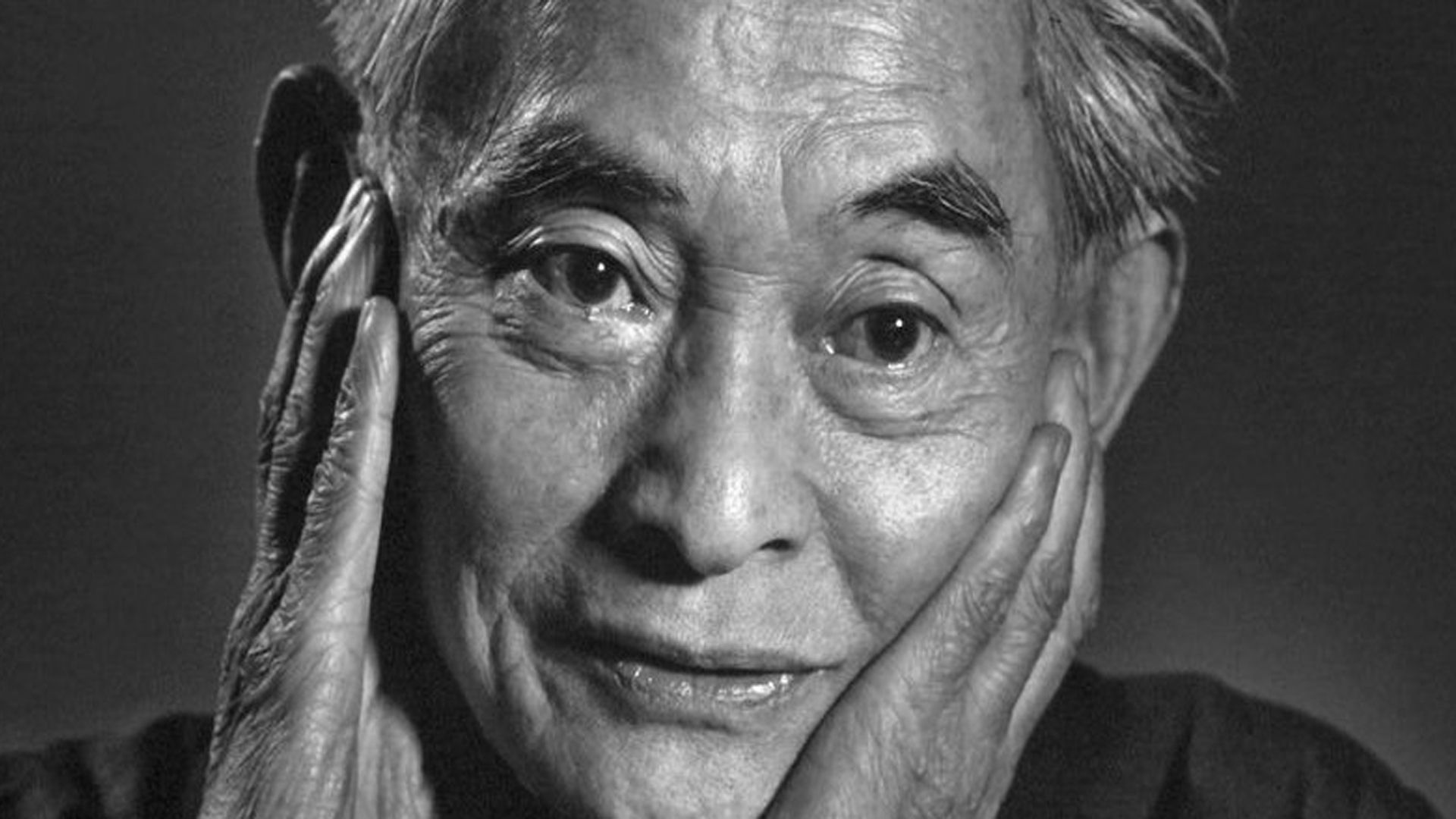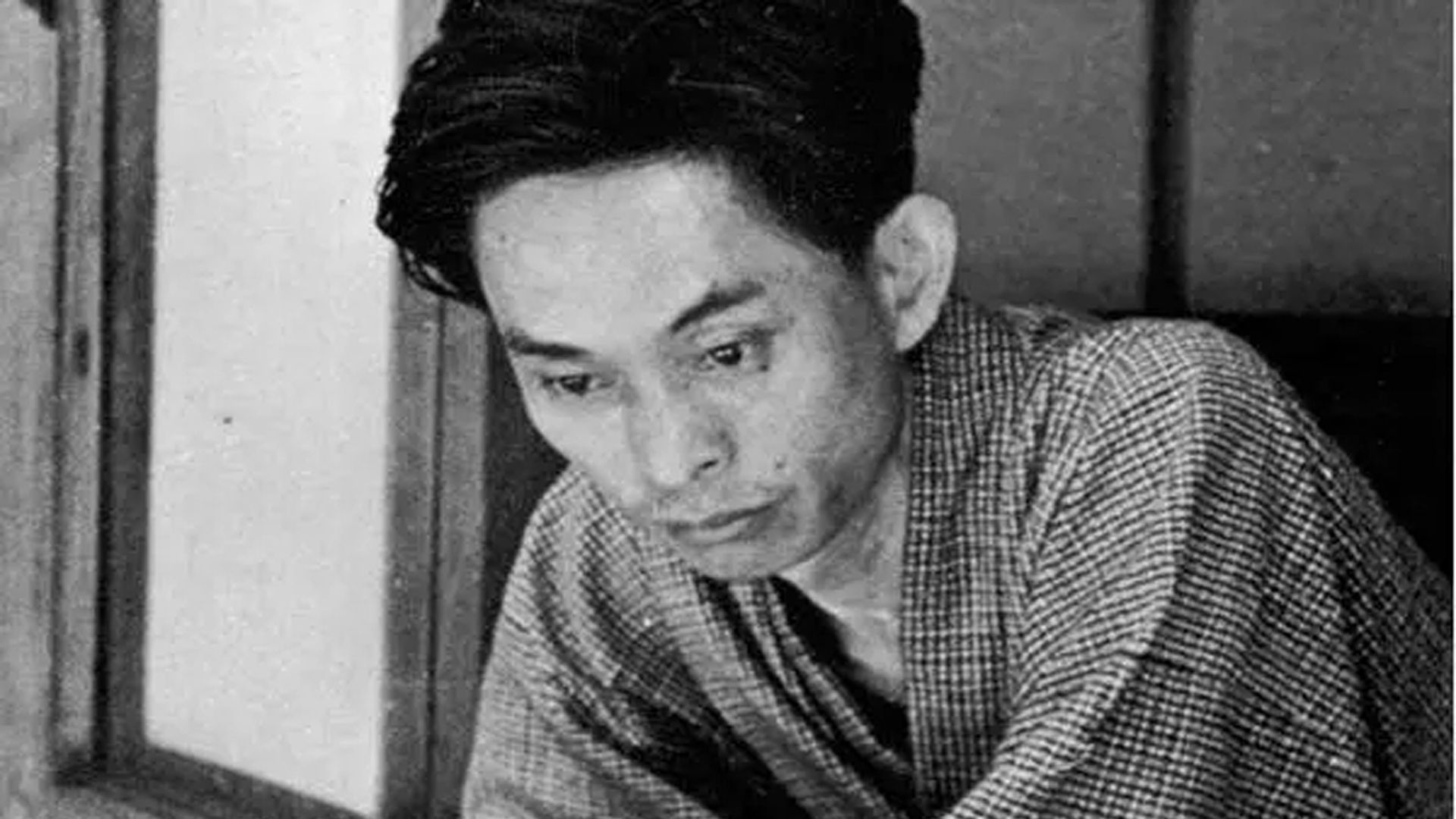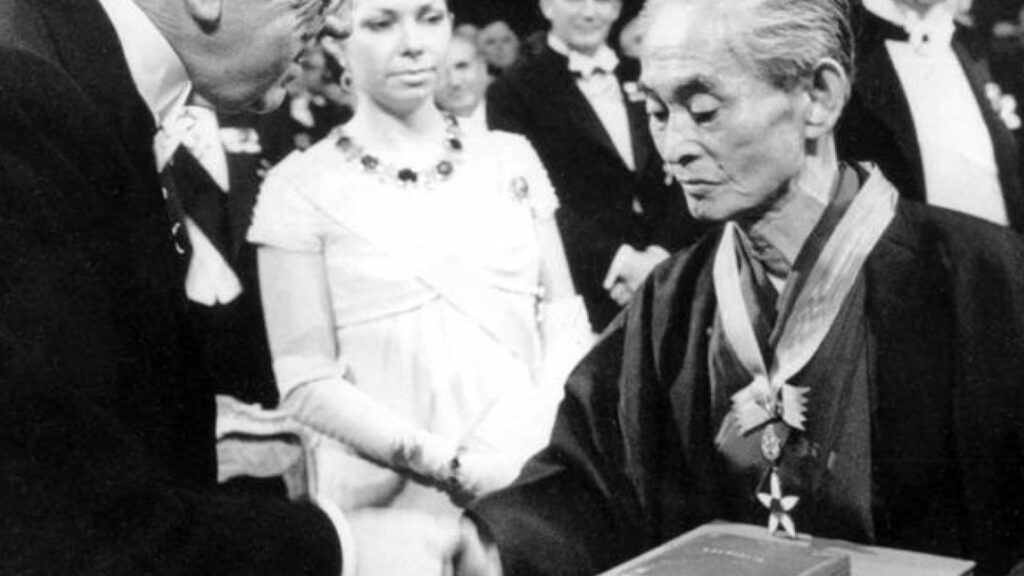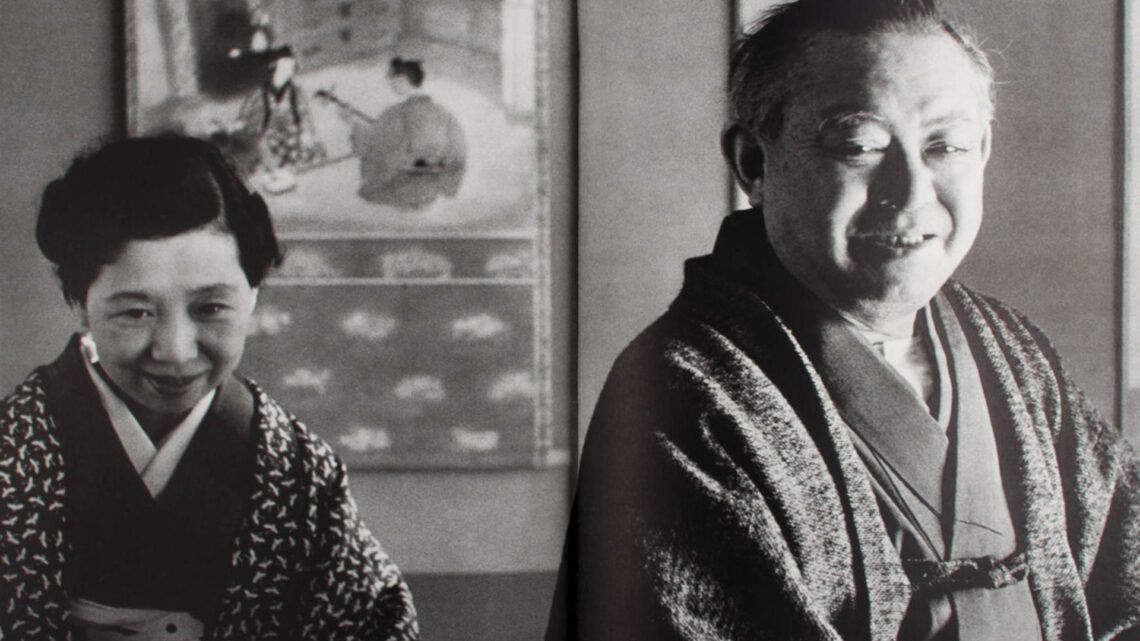
Yasunari Kawabata was born on June 14, 1899, in Osaka, Japan. His childhood was overshadowed by personal tragedies, as his parents passed away early in his life. This painful experience would deeply influence Kawabata’s development as a writer. He began writing poems at an early age, characterized by a melancholic intensity.
Yasunari Kawabata’s literary career gained momentum when his debut novel, “The Dancing Girl of Izu,” captured the attention of the literary scene in 1927. This work laid the foundation for his later creations, known for their subtle portrayal of human emotions and phenomena.
A central theme in Kawabata’s works is the connection between nature and human existence. In his famous novel “Snow Country,” he vividly describes the harmonious symbiosis between seasons and the emotions of his characters. The author’s precise language imparts an almost lyrical quality to his descriptions, allowing readers to immerse deeply in Japanese culture.
Kawabata was awarded the Nobel Prize in Literature in 1968, becoming the first Japanese writer to gain international recognition. This honor underscores the significance of his literary legacy and his ability to convey the essence of Japanese aesthetics to the world.
Throughout his life, Kawabata was not only a writer but also an editor and critic. He played a significant role in founding the influential literary magazine “Bungei Jidai,” which made a substantial contribution to nurturing new talents in the Japanese literary scene.
Kawabata’s works are not only captivating literary masterpieces but also cultural treasures bridging East and West. His narratives reveal a deep connection with nature, a subtle sensitivity to human emotions, and an unparalleled ability to paint with words.
The writer passed away on April 16, 1972, but left behind an impressive legacy that continues through his books. Yasunari Kawabata’s works invite readers to delve into the poetry of life and discover the nuanced aspects of human existence.
Yasunari Kawabata’s unique ability to find beauty in simplicity and articulate it in words makes him a timeless literary genius. His legacy will continue to inspire readers, encouraging them to appreciate the subtle beauty of life in all its facets.
Kawabata’s literary influence extends far beyond his time. His 1964 novel, “Beauty and Sadness,” often considered his masterpiece, delves into the psychological depths of its characters and explores the tension between dreams and reality. Here, Kawabata demonstrates masterful storytelling by transforming the dreams of his characters into a surreal landscape that captivates readers with its poetry and depth.
Another highlight in Kawabata’s career was his contribution to the development of the literary genre of haiku. His haikus exhibit refined simplicity, often capturing the essence of natural moments in just a few words. The delicate strokes of his language create images that linger in the reader’s imagination, celebrating the beauty of nature.
Kawabata’s ability to capture subtle emotions is also evident in his collection of short stories, “Palm-of-the-Hand Stories.” These narrative miniatures offer brief yet intense glimpses into human life. Each story is like a painting, capturing a fleeting moment yet leaving a profound impact.
The writer was not merely an observer of life but also a master at evoking atmospheres. In “Snow Country,” this is particularly evident as he describes the silence and beauty of winter in the mountains. Through his words, readers can hear the crunching snow and feel the cold on their skin as if they were there.
Kawabata’s love for art is also reflected in his commitment to literary expression. As the first Japanese recipient of the Nobel Prize in Literature, he paved the way for subsequent authors, contributing to establishing Japanese literature in the international context.
His personal style, shaped by a blend of tradition and modernity, imparts a timeless quality to his works. Kawabata was aware of continuity in change, successfully bridging the gap between classical Japanese aesthetics and the challenges of modernity.
In retrospect, Yasunari Kawabata is regarded not only as a writer but also as a cultural ambassador of Japan. His legacy comprises not only stories but a rich heritage celebrating the depth of the human soul and the beauty of nature in all its diversity.
With Kawabata’s passing in 1972, his physical presence ended, but his spirit lives on in his works. Anyone delving into the pages of his novels is embraced by the timeless beauty of his words, inspired by the poetry of his writing. Yasunari Kawabata not only shaped Japanese literature but also found a universal language that touches the hearts of readers worldwide.
The Work of Yasunari Kawabata

Yasunari Kawabata’s work is distinguished not only by his empathetic narrative style but also by the diversity of themes he addresses in his works. One of his most significant works is the novel “Thousand Cranes,” which deals with the aftermath of World War II. The story follows young Chikako, who is confronted with the scars of war and personal losses. Kawabata masterfully explores the psychological effects of war on an individual level while simultaneously delving into universal themes of grief and the search for hope.
Another highlight in Kawabata’s career is the novel “The Sound of the Mountain,” where he weaves nature descriptions with the inner struggles of the characters. The sounds of the mountains and the silence of the forest become metaphors for the hidden emotions that exist in the depths of the human soul. The novel reflects Kawabata’s unique ability to connect the external world with the inner emotional world.
Kawabata’s contribution to Japanese literature also extends to the essay genre. In “Notes of a Tea Ceremony Master,” he explores the deep connection between the tea ceremony and Japanese aesthetics. The reader is introduced to the subtle world of tea, which, for Kawabata, is not just a ceremonial act but a source of inspiration and a reflection of Japanese culture.
The writer has also delved extensively into the short story genre, with “The Sleeping Beauty” standing out. This narrative explores the mysterious relationship between dreams and reality, as Kawabata transports the reader into a dream world where the boundaries between the unconscious and wakefulness blur. Through this exploration of the human psyche, Kawabata reveals his fascination with the subconscious and the mysteries of the human mind.
In conclusion, Yasunari Kawabata’s body of work is a rich treasury of human experience. From the depths of wartime scars to the subtle nuances of the human mind, he explores a variety of timeless and universal themes. His works invite readers to delve into the human soul and understand the complexity of life in all its facets.
In Yasunari Kawabata’s novel “Thousand Cranes,” a profound narrative unfolds that not only illuminates the individual destinies of the characters but also represents a collective search for healing and hope in the post-war era. Published in 1952, the work captures the emotional scars of the wartime while painting a picture of resilience and survival.
The main protagonist, Chikako, becomes a symbol of war victims and survivors whose lives are marked by loss, grief, and the quest for a new beginning. The metaphor of “Thousand Cranes” plays a central role. According to Japanese tradition, folding a thousand origami cranes can fulfill a wish. Marked by the scars of war, Chikako begins folding these cranes in the hope of finding healing and solace.
The narrative delves deep into the psychological aspects of the characters, particularly Chikako’s inner struggles. Her internal conflicts, desires, and attempts to cope with traumatic experiences give the novel an intense emotional resonance. Kawabata uses empathetic language to explore the complex feelings of his characters, skillfully weaving their stories into a rich fabric of human experiences.
Another fascinating element of “Thousand Cranes” is its connection to Japanese tradition and culture. Kawabata artfully integrates elements such as the tea ceremony and the symbolism of cranes to create a profound cultural dimension. These cultural aspects not only serve as a backdrop but become vibrant elements influencing the actions and thoughts of the characters.
The quest for healing and hope extends across various levels of the novel. Beyond individual efforts, it is also interpersonal relationships that pave the way for recovery. The way Kawabata shapes the connections between the characters conveys the message that shared humanity and empathy have the power to heal even the deepest wounds.
The narrative of “Thousand Cranes” is characterized by a deep melancholy, yet threaded with a touch of hope. Kawabata explores the fragility of human life and the resilience of the human spirit. The characters undergo a process of self-discovery and the regaining of joy in living while confronting the shadows of the past.
Overall, “Thousand Cranes” leaves a lasting impression as a powerful work that captures the emotional tumult of the post-war period in a sensitive and profound manner. Yasunari Kawabata demonstrates his ability to clothe human emotions in artistic words and, in doing so, creates a bridge between individual experience and collective history.
“Beauty and Sadness” (1964) by Yasunari Kawabata is a novel that stands uniquely in its deep melancholy and refined narrative style. This late work of the Japanese Nobel laureate delves into the dark abysses of the human psyche, exploring the complexity of love, desire, and loss.
The story follows the aging Oki Toshio, a famous writer who encounters an old love from his youth, now embodied in the form of the young actress Otoko Ueno. This love becomes a mirror that confronts Oki with his own decisions and the associated consequences. Kawabata skillfully weaves a plot that jumps between times, revealing the delicate connections between past and present.
The metaphor of “beautiful sleep” runs through the novel like a red thread. Here, sleep is not only considered a state of rest but a metaphor for the disappearance of pain and immersion into dreams and memories. Kawabata explores the idea that death itself can be seen as a kind of beautiful sleep, free from the sufferings of life.
The prose in “Beauty and Sadness” is characterized by a delicate beauty that penetrates the depths of the human soul. Kawabata uses precise yet poetic language to depict the internal conflicts of the characters. Each sentence seems carefully crafted, giving the novel a lyrical quality that immerses the reader in a dreamlike atmosphere.
Another fascinating aspect is Kawabata’s treatment of themes of time and memory. The novel creates a timeless dimension where past and present merge. This non-linear narrative structure enhances the melancholic atmosphere and underscores the inevitability of time that transforms everything.
The relationship between Oki and Otoko becomes a microcosm raising larger questions about love, guilt, and redemption. Kawabata subtly explores the emotional entanglements of the characters, revealing the beauty in pain and the complexity of human relationships.
“Beauty and Sadness” is not just a novel but an introspective journey into the depths of human existence. Kawabata leaves us with a work that blurs the lines between dream and reality, inviting us to immerse ourselves in the beautiful sleep of literature—a state that prompts us to look beyond the surface of life and explore the deeper layers of human experience.
“Snow in Spring” by Yasunari Kawabata takes us on a journey where the boundaries between nature and human emotions become indistinct. Published in 1947, this novel not only showcases Kawabata’s masterful storytelling but also reveals his profound connection to Japanese aesthetics.
The title itself resembles a haiku, encapsulating the novel’s atmosphere. In this narrative, we delve into the delicate beauty of nature, marked by the cold splendor of snow contrasting with the blossoming spring. Kawabata utilizes nature not merely as a backdrop but as a reflection of the inner conflicts within the characters.
The protagonist, Yoko, is a young woman wrestling with inner turmoil. Her story unfolds against the backdrop of an idyllic mountain region immersed in the silence of the snow. This setting serves as a canvas where Kawabata paints the nuances of Yoko’s emotional life.
“Snow in Spring” explores the subtle facets of love and the search for identity. Yoko, torn between two men, reflects the fragile nature of human relationships. Kawabata demonstrates his ability to portray the complex emotions of the characters with a gentle intensity, immersing the reader in an emotional resonance.
Another intriguing aspect of the novel is its connection to Japanese culture, particularly the tea ceremony. Kawabata seamlessly integrates the rituals and symbolism of the tea ceremony into the narrative, adding an additional layer of cultural depth. The tea ceremony becomes not just a cultural element but a mirror reflecting the characters’ inner processes.
The structure of the novel resembles an intricate haiku. Kawabata carefully selects words and arranges them in a way that produces both profound and ethereal sensations. His precise language creates images that impress not only visually but also emotionally. The silence between the lines becomes a space for reflection and contemplation.
“Snow in Spring” not only tells a story but invites the reader to immerse themselves in the poetry of life. Kawabata reveals the beauty in simplicity, the profound layers of the human soul, and the harmony between nature and emotions. This novel stands as a masterpiece, deeply anchored not only in the literary world but also in the human experience, maintaining timeless relevance.
Kawabata and His Nobel Prize

Yasunari Kawabata’s contribution to world literature was crowned in 1968 with the highest literary honor: the Nobel Prize in Literature. This recognition was not only an acknowledgment of his individual creative prowess but also marked a milestone in literary history, as he became the first Japanese recipient of this prestigious award.
Kawabata was awarded the Nobel Prize in Literature for his “masterful narrative art, infused with great sensitivity and permeated by the poetic force challenging our imagination and opening our senses.” These words from the Nobel jury capture the unique quality of Kawabata’s writing, which is not only based on captivating plots but also on a deep sensitivity to the nuances of human emotions.
The awarding of the Nobel Prize propelled Yasunari Kawabata into the international literary canon and helped draw global attention to the rich tradition of Japanese literature. His success inspired subsequent generations of Japanese writers and paved the way for broader recognition of Japanese literature in the global context.
The works that led Kawabata to the Nobel Prize reflect his versatility and literary brilliance. From profound psychological novels to artistic short stories and compelling essays, Kawabata mastered various literary forms, leaving behind a multifaceted legacy.
The Nobel Prize in Literature not only recognized Kawabata’s individual talent but also acknowledged his role as a bridge-builder between cultural worlds. Awarding this prize to a Japanese writer contributed to overcoming prejudices and emphasizing the cultural diversity of literature.
Kawabata’s Nobel recognition marks a pinnacle in his career, but it also reflects his lifelong commitment to promoting literature. As a writer, editor, and critic, he significantly contributed to the development of the literary scene in Japan while expanding the boundaries of his native literature.
In world literature, Yasunari Kawabata is remembered as a world-class writer whose works are not only timeless but also make a significant contribution to cultural understanding. The Nobel Prize in Literature not only honored the life and work of an exceptional writer but also served as a symbol of the universal significance of literature as a bridge between people.
The Legacy of Yasunari Kawabata
Yasunari Kawabata’s works continue to possess timeless relevance, providing valuable insights into human nature and the subtle nuances of life. His deep sensitivity to human emotions, masterful storytelling, and artistic descriptions of nature still have the power to captivate and move readers.
An aspect that remains significant in the modern world is Kawabata’s ability to penetrate the human psyche. His characters are multifaceted, reflecting the complexity of human emotions. Through his works, he allows us to delve into the depths of the human soul, understanding the various facets of love, loss, hope, and sorrow. These universal themes remain timeless and relevant, serving as a mirror to our own experiences.
Kawabata’s exploration of nature and his profound connection to it also convey an important message today. In a time when modern society often feels disconnected from nature, Kawabata’s writing reminds us of our close ties to our surroundings. His detailed descriptions of landscapes, seasons, and natural phenomena serve as a reminder of the beauty of nature, urging us to appreciate and protect it.
Another significant contribution of Kawabata lies in his understanding of the importance of tradition and culture. His works are imbued with Japanese aesthetics and traditions such as the tea ceremony. In a globalized world where cultural identities sometimes blur, Kawabata reminds us that preserving and appreciating our cultural roots can contribute significantly to the diversity and enrichment of the world.
Kawabata’s novels and stories also invite reflection on the transience of life and the search for meaning. In a world often characterized by haste and superficiality, his works encourage pausing and contemplating the fundamental questions of existence. They inspire a recognition of the subtle beauties of life and a deeper exploration of one’s own emotions.
In summary, Yasunari Kawabata’s legacy as a writer remains of enduring significance. His works invite us to engage with our own humanity, appreciate nature, preserve cultural values, and explore the profound questions of life. Even after decades, Kawabata’s writing continues to inspire the exploration and understanding of the rich depth of life in all its facets.
Yasunari Kawabata’s Key Works
Dance in the Snow (1927):
Yasunari Kawabata’s debut novel, showcasing his narrative sophistication and sensitivity to the human psyche.
The Izu Dancer (1926):
A short story that established Kawabata’s reputation as a writer, emphasizing his ability to portray subtle emotions.
Snow Country (1947):
A novel that sensitively addresses post-war themes in Japan, highlighting Kawabata’s exploration of the psychological effects of war.
Thousand Cranes (1952):
A pivotal work exploring the aftermath of World War II through the story of Chikako and the symbolism of a thousand origami cranes.
Snow in Spring (1947):
A novel emphasizing the close connection between nature and human existence, highlighting Kawabata’s nuanced descriptions of nature.
The Master of Go (1951):
Kawabata’s exploration of the traditional Japanese board game Go, serving as a metaphor for human relationships.
The Sound of the Mountain (1972):
A late masterpiece addressing themes of aging and loss, showcasing Kawabata’s timeless storytelling.
The Sleeping Beauty (1960):
A narrative blurring the boundaries between dream and reality, emphasizing Kawabata’s fascination with the subconscious.
In Praise of Shadows (1962):
An essay exploring Kawabata’s love for the tea ceremony and the connection between tea and Japanese aesthetics.
Palm-of-the-Hand Stories (1935-1941):
A collection of short stories highlighting Kawabata’s mastery in narrative brevity and depth.
This chronological (though incomplete) list illustrates the literary evolution of Yasunari Kawabata’s body of work, from his early pieces to his late masterpieces, encompassing an impressive range of themes and stylistic approaches.



